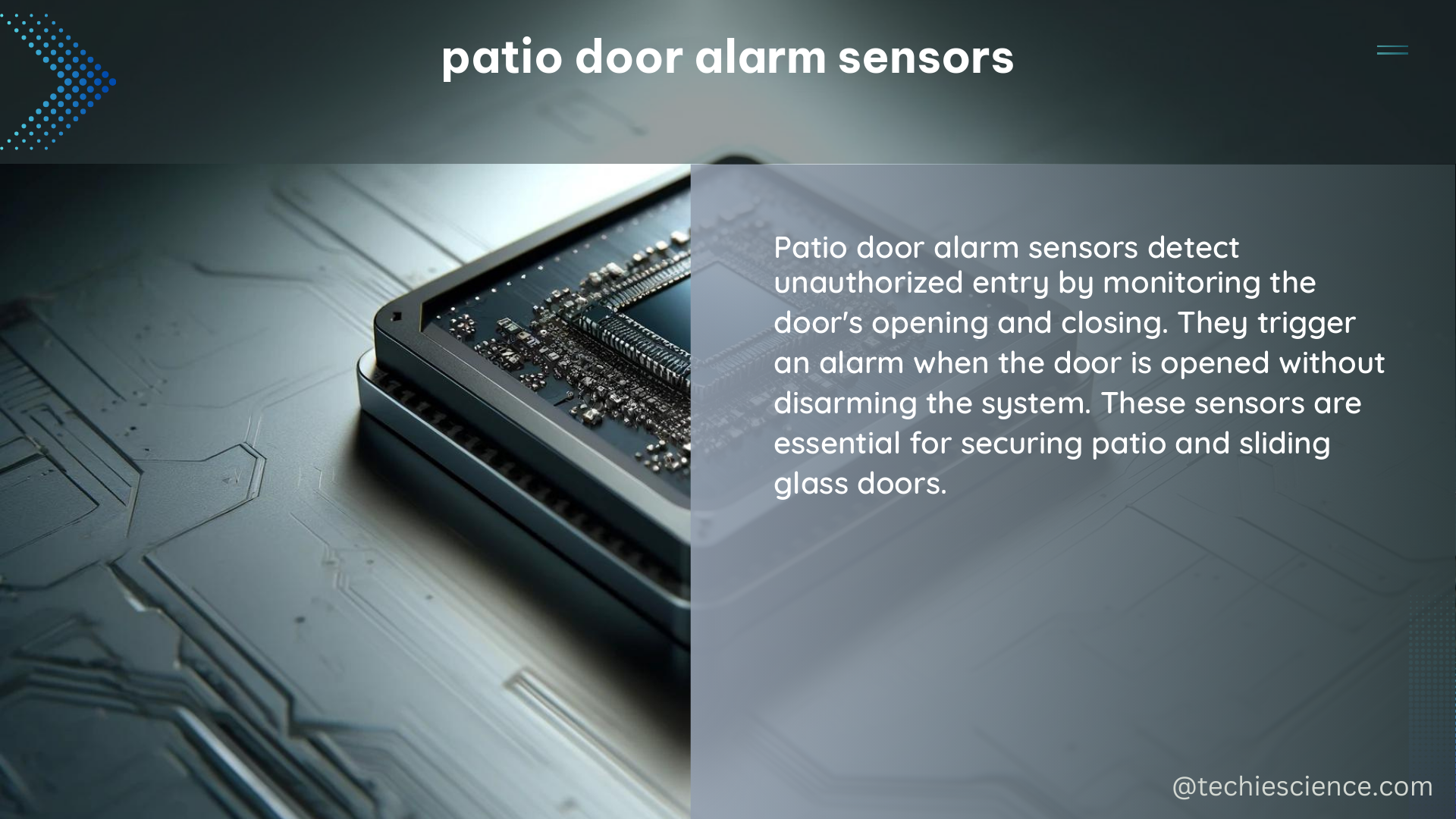Patio door alarm sensors are a crucial component of any home security system, designed to detect when a patio door is opened or closed. These sensors typically use a magnet and a sensor to determine the position of the door, and their performance can be affected by various factors, including the strength of the magnet, the distance between the magnet and the sensor, and the angle at which they are mounted.
Magnet Strength
The strength of the magnet used in the sensor is a critical factor in determining its performance. A stronger magnet will be able to detect the position of the door from a greater distance, which can be particularly useful for larger doors or doors with thicker frames. According to the blog post, powerful magnets can be used to bypass door sensors by tricking the sensor into thinking the door is closed when it is actually open.
When selecting a patio door alarm sensor, it’s important to consider the size and weight of the door, as well as the thickness of the door frame. For larger or heavier doors, a sensor with a stronger magnet may be necessary to ensure reliable detection. Manufacturers typically provide specifications on the maximum detection range of their sensors, which can help you choose the right product for your needs.
Magnet-Sensor Distance

The distance between the magnet and the sensor is another important factor to consider. If the distance is too great, the sensor may not be able to detect the magnet, leading to false negatives. Conversely, if the distance is too small, the sensor may be triggered even when the door is closed, causing false positives.
The blog post mentions using a can of air to beat request-to-open door sensors, suggesting that the distance between the magnet and the sensor can be exploited to bypass the sensor. To ensure reliable performance, it’s important to follow the manufacturer’s recommendations for the optimal distance between the magnet and the sensor.
Mounting Angle
The angle at which the magnet and sensor are mounted can also affect the performance of the sensor. Many sensors are designed to be mounted with the magnet and sensor aligned vertically, but they can often still detect the magnet when it is mounted at a slight angle.
The blog post mentions mounting the sensor and magnet at a 90-degree angle, which suggests that some sensors can still function effectively even when mounted in this way. This can be useful in situations where the door frame or other physical constraints make it difficult to mount the sensor and magnet in the recommended orientation.
DIY Options
In addition to commercially available patio door alarm sensors, there are also several DIY options for those who are technically inclined. The blog post mentions hacking a wireless burglar alarm sensor and building an Arduino-based wireless host to couple with commercially available sensors.
This approach requires some technical knowledge and expertise, but it can be a cost-effective way to create a custom patio door alarm sensor. By using open-source hardware and software, DIY enthusiasts can tailor the sensor to their specific needs and preferences.
Motion Sensor Integration
The blog post also mentions using a motion sensor in group 25, which is set up as a safety motion sensor that does not trigger an alarm. This suggests that some patio door alarm sensors can be integrated with motion sensors to provide additional layers of security without triggering false alarms.
By using a motion sensor that does not trigger an alarm, homeowners can still be alerted to movement near the patio door without the risk of false alarms. This can be particularly useful in areas where pets or other moving objects may be present, as it can help to reduce the number of unnecessary alerts.
Conclusion
Patio door alarm sensors are an essential component of any home security system, and their performance can be affected by a variety of factors. By understanding the importance of magnet strength, magnet-sensor distance, mounting angle, and DIY options, homeowners can choose the right patio door alarm sensor for their needs and ensure reliable performance.
Additionally, the integration of motion sensors can provide an extra layer of security without the risk of false alarms. By considering these technical specifications and exploring the various options available, homeowners can create a comprehensive and effective patio door alarm system that meets their specific security requirements.
References:
– Bypassing Common Physical Security Interior Controls | War Room. (2016-02-08). Retrieved from https://warroom.rsmus.com/bypassing-common-physical-security-interior-controls/
– Mixing and Matching Sensors – DoItYourself.com Community Forums. (2004-02-16). Retrieved from https://www.doityourself.com/forum/electronic-home-security-systems-alarms-devices/159192-mixing-matching-sensors.html
– Rule with non-alerting sensor – Surety Support Forum. (2015-08-17). Retrieved from https://support.suretyhome.com/t/rule-with-non-alerting-sensor/1463
– Hacking a wireless burglar alarm sensor. – Arduino Forum. (2015-06-20). Retrieved from https://forum.arduino.cc/t/hacking-a-wireless-burglar-alarm-sensor/319174
– Is there any door alarm sensor that can be fitted to a door frame like this? – Reddit. (2020-06-29). Retrieved from https://www.reddit.com/r/smarthome/comments/hhyo7c/is_there_any_door_alarm_sensor_that_can_be_fitted/

The lambdageeks.com Core SME Team is a group of experienced subject matter experts from diverse scientific and technical fields including Physics, Chemistry, Technology,Electronics & Electrical Engineering, Automotive, Mechanical Engineering. Our team collaborates to create high-quality, well-researched articles on a wide range of science and technology topics for the lambdageeks.com website.
All Our Senior SME are having more than 7 Years of experience in the respective fields . They are either Working Industry Professionals or assocaited With different Universities. Refer Our Authors Page to get to know About our Core SMEs.